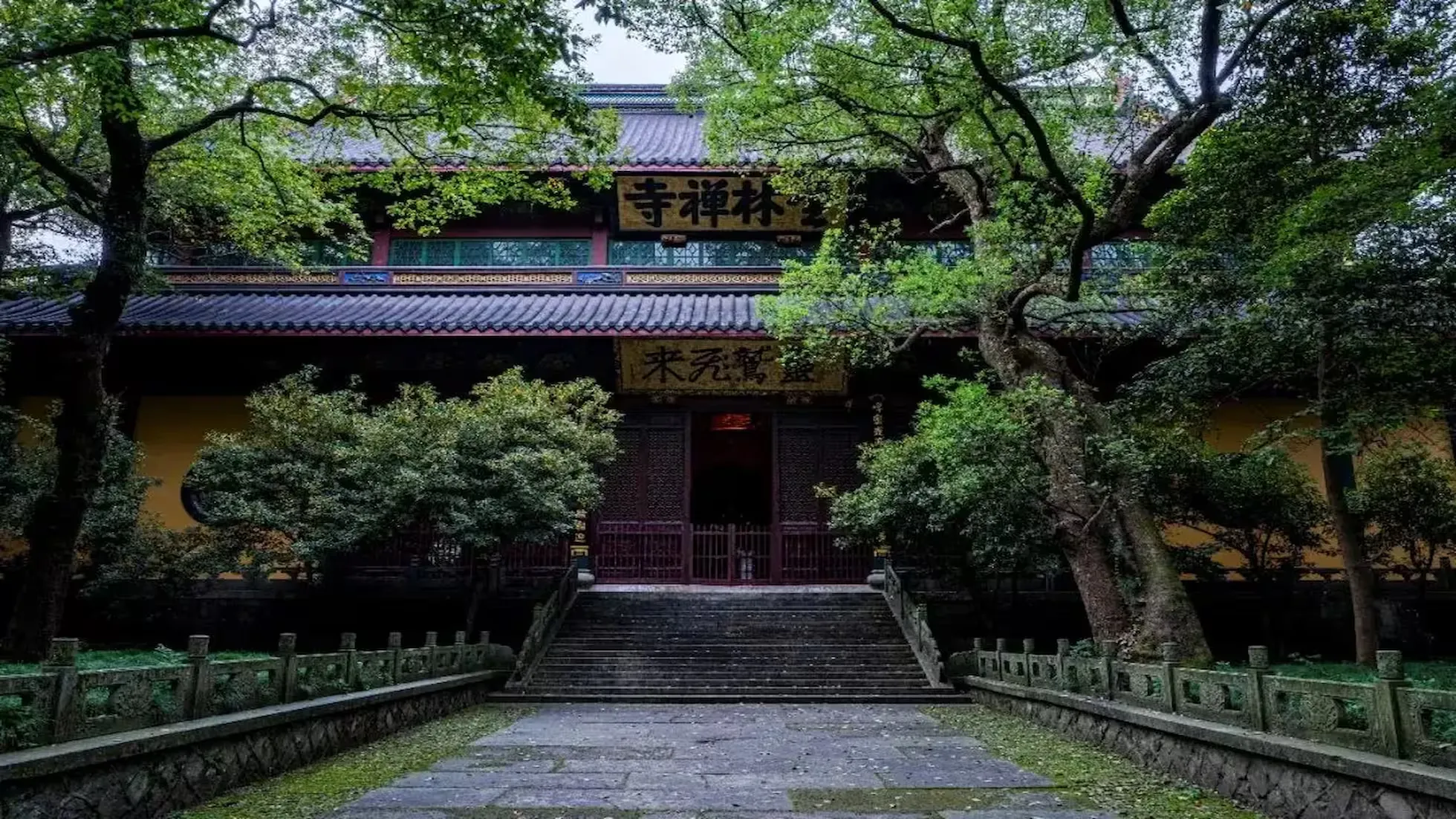In Search of Lingyin Temple

Every year on New Year’s Day, I always visit a temple in Hangzhou to experience some peace and freshness. However, I do not like crowded places, so I usually choose smaller temples with less of a crowd. The first one I frequently visited was Jingshan Temple, whose tranquility had once captivated me. I visited there on New Year’s Day in 2021, 2022, and 2023. However, with the expansion of Jingshan Temple and its increasing fame year by year, coupled with the increasingly rugged mountain roads, it is no longer suitable for those seeking peace. Temples in the city are also overcrowded, making it difficult to find a quiet corner. As a result, I chose to go early in the morning to avoid the peak crowds. Generally speaking, temples open at 6 AM, which is just the perfect time.
On a clear January morning, the sky over Hangzhou begins to light up at 6 AM. That day, the air was filled with a slight mist, and the sky was still dim, with no cars on the road. Only a few early risers from Meijiawu Village were picking fresh vegetables at the roadside stalls. At 6:30 AM, I departed from Meiling North Road and drove for two kilometers of mountain roads until I reached the Feilai Peak parking lot. The security guards and vendors were already busy, while the ticket booth of the scenic area would not open until 7:30 AM. Standing at the entrance, there were already a dozen young people queuing up.
For visitors from other regions, a combined annual pass for Hangzhou parks and temples is a great deal. This pass costs only 40 yuan per year, and you can enjoy a half-price discount if purchased after October. With this pass, you can visit parks and many temples around West Lake, such as Faxi Temple and Jingshan Temple.
Passing through the hidden commercial street, I made my way to the entrance of Feilai Peak Scenic Area. Lingyin Temple is located deep within Feilai Peak. The biggest difference between this temple and others is that it not only has a rich historical heritage but also enjoys unparalleled natural scenery. The stone carvings on Feilai Peak are rare artistic treasures in the southeastern region, worthy of admiration by every visitor. In the early morning, before the sky is fully bright, the sculptures on Feilai Peak can be faintly seen, creating a mysterious and solemn atmosphere. After just a two-minute walk, you can reach the main gate of Lingyin Temple. Although the layout of each temple is similar, the cultural ambiance of each is unique. Jingshan Temple’s sculptures are simple, Faxi Temple’s are gentle, while Lingyin Temple’s sculptures are particularly majestic and awe-inspiring.
Lingyin Temple is well-managed, and the details reflect its excellence. Each display sign precisely marks the day of the week. However, in such a Buddhist sanctuary, using the weekly count system seems somewhat inappropriate. Perhaps using the Buddhist calendar would be more suitable.
As Lingyin Temple gradually became more commercialized, it also set up its own exhibition hall, displaying numerous fine artworks, many by famous modern and contemporary cultural figures connected with the temple. The temple has long been a pilgrimage site for scholars and poets. Every year during the Laba Festival, Lingyin Temple distributes porridge to the citizens, and the Laba congee has become a unique intangible cultural heritage of Hangzhou. During the Chinese New Year, Lingyin Temple also gives away 300,000 sets of couplets, and many people consider receiving a couplet from Lingyin Temple a lucky charm for the new year.
Lingyin Temple also features a unique Arhat Hall. While other temples usually have eighteen or thirty-two Arhats, Lingyin Temple’s Arhat Hall has five hundred bronze seated statues, each with a distinct face and Dharma instrument, as if each Arhat has its own story. If you are interested, perhaps you can find an Arhat that resembles you.
Within Lingyin Temple, there is also an unassuming little stone pagoda, a national key cultural heritage site, carrying the mark of the temple’s thousand-year history. According to historical records, this temple can be traced back to the year 987. After the Indian monk Hui Li arrived, he saw that the mountain resembled the Mount Lingjiu of the West, so he named it Feilai Peak and built a hermitage here, which eventually led to the construction of Lingyin Temple. Over the centuries, Lingyin Temple has survived wars and calamities, especially during the Cultural Revolution. Thanks to the instructions of Premier Zhou Enlai, and the efforts of Zhejiang University teachers and students, the temple was preserved.
Among the many figures associated with Lingyin Temple, Emperor Kangxi is undoubtedly an interesting character. Although he was an emperor, he personally renamed Lingyin Temple to “Yunlin Zen Temple,” but this renaming was not accepted by the public, and people still habitually call it “Lingyin Temple.” The plaque bearing the name “Yunlin Zen Temple” still hangs at the second gate of Lingyin Temple. Another person with a deep connection to Lingyin Temple is Ji Gong, who practiced here for many years. After his death, he was revered as the “Dragon-Subduing Arhat,” and his bronze statue stands alongside the other Arhats in the Arhat Hall. Ji Gong’s story may bring you a sense of open-mindedness.
Lingyin Temple, an ancient temple that has stood for thousands of years, not only carries profound Buddhist culture but also contains countless legends about history and human nature. It is a jewel of Hangzhou and a spiritual home for many.
Published at: Jan 3, 2025 · Modified at: Aug 31, 2025


